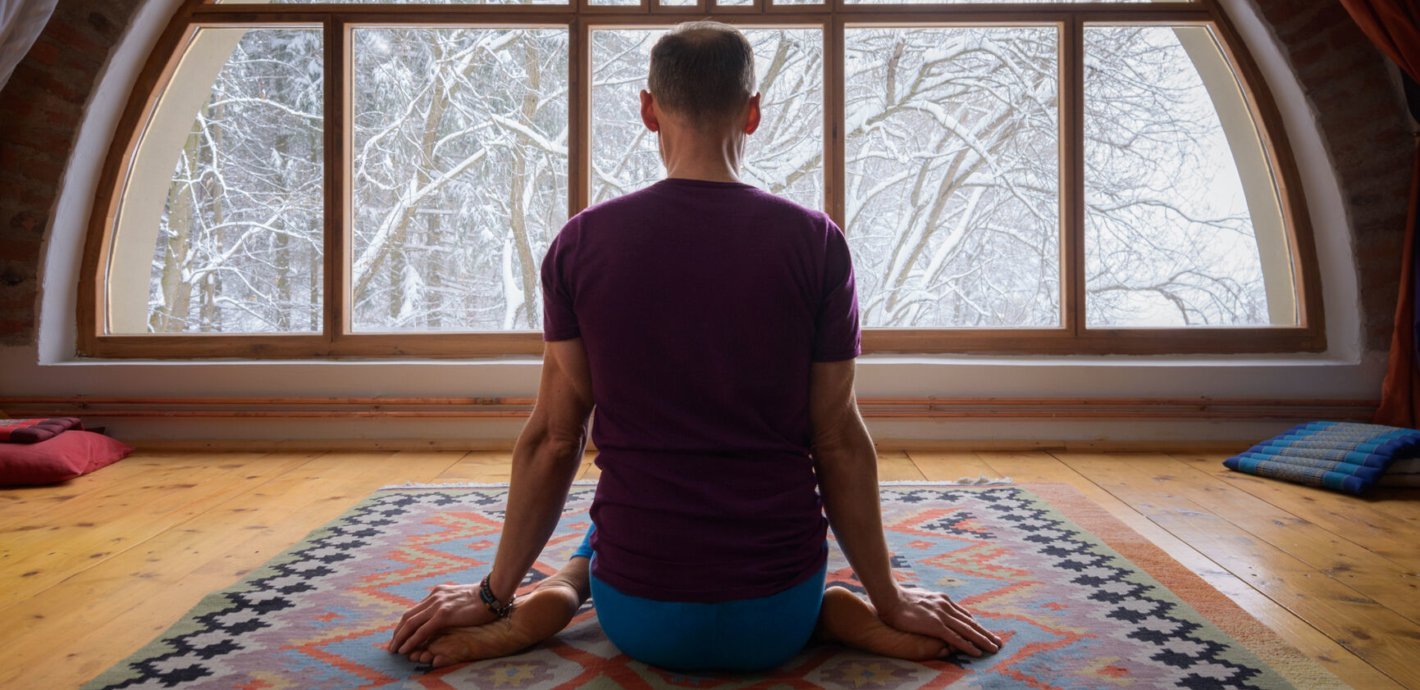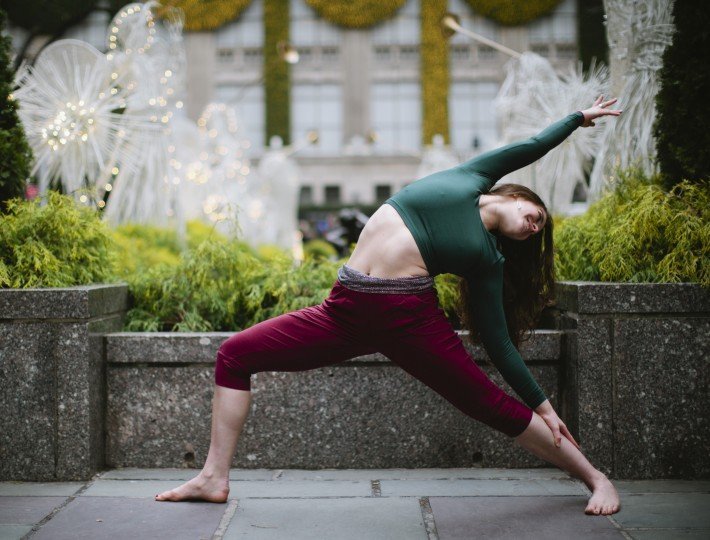The holiday season is filled with festivities, family, food, and fun. However, as we all know, it can also become a very busy and a somewhat stressful time. During these days we need our yoga practice more than ever. Yet, even if we have the best intentions, we often find it increasingly difficult to stick to our regular routine as we become inundated with planning, travel, and social obligations. All of these extra demands on our time can also make it challenging to maintain our energy and the ability to focus on our spiritual practice.
Don’t let the harried nature of the holidays rob you of this vital time for yourself. Here are seven things you can do to ensure you maintain your practice and find some much-needed centering during the hustle and merriment of the season. Most important, do your best to relax and enjoy these special moments and to make memories with your friends and family. The yoga practice is a technique to help us feel more deeply interconnected with everything around us. This time of year can be viewed as a particularly interesting test for our ability to take our practice off the sticky mat or meditation cushion and share its benefits and positive effects with those around us.
1. Make an appointment with yourself
It is so important to set aside a special time for your yoga practice and guard this time as you would any appointment. If you know that you have a particularly busy day ahead, get up 1 hour before the rest of your family to honor your commitment to yourself. If you practice first thing in the morning, it can be helpful to clear the space where you will practice and set out your yoga mat the night before so that, as soon as you wake up, you can begin. On the other hand, if it’s better for you to get your sleep, make an agreement with your family—especially your partner or kids—that this private time is inviolable. Have them help you guard your practice time.
Related: A Brilliant Way to Organize Your Calendar for Less Stress
2. Start and finish your practice with quiet contemplation
The holidays can be a strangely stressful time when you might notice more anxiety, worry, fear, or anger coming up. To help counter this activation of your sympathetic nervous system, it is very helpful to take a few minutes to sit quietly and center yourself before or after your practice. Begin by observing your breath. Then consciously start to lengthen your exhalation. By doing so, you directly stimulate a natural parasympathetic response, which will help increase your feelings of calmness, connection, and compassion. It can be especially nice to include a gratitude or loving kindness meditation to increase this intentional cultivation of thankfulness and good wishes for yourself and others. Or you may wish to set an intention for yourself, your family, or the day ahead. You can do this by chanting a particular mantra, saying a quiet prayer, or reciting Om several times.
3. Set realistic goals and plan ahead
It is helpful to keep a realistic perspective about how much time you have for your practice each day. If you have only 20 minutes, plan a routine that will fit into that time frame. Assess what is most important for you to do in order to make it feel like you are able to maximize this time you have to connect more deeply to yourself. When you have less time, it is important to plan ahead and know which postures you intend to practice. Be sure to move your spine in all of the cardinal directions: forward bending, backward bending, twisting to each side, lateral movement to each side, extension, and compression. Take a few minutes to include conscious breathing or pranayama, relaxation, or a short meditation. Above all, remember that even if it is highly modified, keeping the continuity in your practice will help you to feel mentally and emotionally balanced.
4. Feel the flow
Don’t worry about making the perfect position with your body or doing a “correct” sequence within your practice. Instead, focus on your breath and the subtle sensations in your body. Immerse yourself in the flow of body, breath, and movement together. Let go of any preconceived ideas about what a “good” practice should be, and allow the yoga practice to become whatever it needs to be for you in that moment. Enjoy this experience for what it is and approach it with a sense of playfulness and curiosity. Celebrate the fact that you made time to connect with a deeper aspect of yourself at all during this busy and stressful time of year. Maybe even try something different or new.
Related: How Important is Perfect Form in Fitness?
5. Hydrate and eat well
The holidays tend to be full of rich, sweet, and indulgent foods. Every cell and tissue in your body needs water to work properly, so be sure to remember to hydrate well during these demanding and decadent days and nights. Even mild dehydration can make you feel tired and drain your energy. The body also needs water to rid itself of toxins and waste and to keep your joints lubricated. Also try to avoid drinking too much alcohol, eating big meals late at night, and snacking after your last meal. When you eat late at night, it becomes more difficult to wake up early feeling refreshed. If you know you will be out late with family or friends, plan ahead and move the next day’s yoga practice to a later start time, if possible.
6. Travel with your yoga mat
If you are visiting family or traveling during the holidays, bring your yoga mat. It can be fun to check out a local yoga class or visit a new studio. If you have the space to practice on your own, taking an online yoga class can help keep you focused and motivated. There are several classes with yoga Master R. Sharath Jois on Sonima ranging from a short 10-minute class to a 60-minute class. You can also find free classes on YouTube. Making an effort to connect with other practitioners or a yoga community will help support your practice. Plus, this can be another way to stay committed to setting aside dedicated time for yourself and your practice.
7. Take 5 minutes to breathe
Even 5 minutes of controlled, coherent breathing will go a long way to helping you feel calm, connected, and peaceful during busy or stressful periods. To practice a coherent breathing technique, sit comfortably or lie down. Then lengthen your inhalation to a count of 4 to 6 seconds and extend your exhalation to a count of 6 to 8 seconds. This kind of conscious, controlled breathing can help reduce symptoms of insomnia, anxiety, depression, and other types of agitation caused by excess stress building up in the nervous system. Couple this with some restorative postures like legs up the wall, or lie over a bolster or pillow in reclined bound angle pose. Making this short time to rest and restore while consciously focusing on your breath can drastically change your mental and emotional space for the better.











Comments (0)